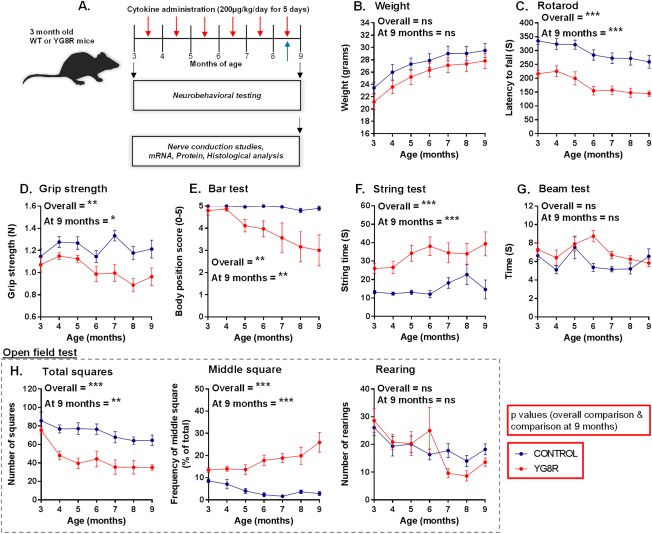Figure 1.

Neurological deficits in YG8R mice that carry a human genomic FXN transgene containing expanded GAA repeats of 82 to 190 units within intron 1 of FXN. (A) Experimental protocol using wild‐type controls (WT) and YG8R mice to investigate the effects of cytokine administration on disease phenotype. Mice received monthly infusions of cytokines (red arrows) while also being assessed at monthly time points using an extensive range of behavioral performance tests. Bromodeoxyuridine was also administered during the last round of cytokine treatment (blue arrow). At 9 months of age, neurophysiological evaluation of both sensory and motor nerve conduction was performed. Subsequently, mice were sacrificed for mRNA, protein, and histological analysis. Comparisons between WT‐control and untreated YG8R mice: longitudinal results for (B) weight; (C–G) motor performance; and (H) locomotor performance (open field test) in mice from 3 to 9 months of age. Repeated measures two‐way analysis of variance was applied for all behavioral studies. *p < 0.05;**p < 0.01; ***p < 0.001; values represent means ± standard error of the mean. For all tests, n = 10 (5 female and 5 male) per genotype. mRNA = messenger RNA; ns = not significant.
